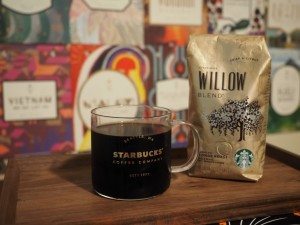 Do you want to make a perfect cup of coffee at home?
Do you want to make a perfect cup of coffee at home?
Follow these four rules to the letter: The four rules are water, freshness, proportion, and grind.
**WATER**
Water – Make sure that you are using clean, filtered water. Please do not use tap water! Your water can make a huge difference in how your coffee tastes! Your coffee is mostly water.
**FRESHNESS**
I’m going to take some time to explain freshness. It should be straight forward, but it can trip people up. The very general rule for freshness is “use your coffee within 7 days.”
When you’re considering the freshness rule, you have to think about how your coffee is packaged. Make a note of whether it’s in paper, or in plastic Flavorlock packaging:
Freshness rule for Flavorlock packaging:
The overwhelming majority of Starbucks coffee is packaged in plastic, Flavorlock packaging. It’s a thick, durable plastic designed to protect coffee from heat, the elements, and more. It has a one-way valve on it somewhere on one side (which sometimes can be less than obvious), and on the backside, you’ll find an expiration date. Here’s what Flavorlock packaging looks like:
The expiration date is obviously on the back of the bag:
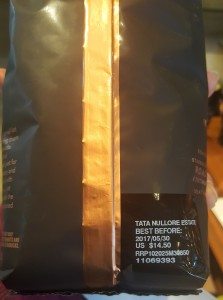 Your coffee inside a Starbucks store, such as Verona, Breakfast Blend, Espresso Roast and more, are all in Flavorlock packaging. All of the Starbucks coffee inside of a your local grocery store is also in Flavorlock packaging.
Your coffee inside a Starbucks store, such as Verona, Breakfast Blend, Espresso Roast and more, are all in Flavorlock packaging. All of the Starbucks coffee inside of a your local grocery store is also in Flavorlock packaging.
Flavorlock packaging is the industry standard for keeping coffee fresh for several months in special, thick plastic bags.
Use coffee in Flavorlock packaging either before the expiration on the back, or within 7 days of opening the bag, whichever comes first. Flavorlock packaging should never have a handwritten “Roasted on” date on it. Rather it’s in plastic, sealed, and comes with an expiration date imprinted upon it.
Freshness rule for hand-scooped coffee:
We’re not done with “Freshness” though. We have to talk about hand-scooped coffee. This is coffee that’s roasted but is NOT put into plastic Flavorlock bags. Hand-scooped coffee is literally scooped from bins into a paper bag:
On the back of the bag, someone has handwritten the actual date the coffee was roasted, NOT an expiration date:
It’s super important to notice this distinction between coffee in paper bags, and coffee in Flavorlock packaging. If you are thinking about buying coffee online from another person, (not buying directly from Starbucks or a grocery store) think carefully about these expiration dates!
The general rule for hand-scooped coffee is this, “Use hand-scooped coffee within 15 days from the date of roasting. Toss out the coffee if more than 15 days have gone by since it was roasted.” In the picture above, the Paradeisi Blend coffee was roasted on the 12th. It should be tossed out, after the 27th of October, the 15th day from the date of roasting.
Unfortunately, just knowing the 15 day rule doesn’t really tell you the whole story. When coffee comes out of the roaster, it goes through a phase of de-gassing. By the time you buy coffee in Flavorlock packaging, it is usually long-since degassed. But that isn’t always the case with hand-scooped. Starbucks says that a coffee can degas for up to 8 days. In my humble opinion, I think that a de-gas phase from 5 to 8 days is fine. Do not drink coffee before it’s fully degassed. Coffee straight from the roaster is a bit like a green banana; it hasn’t developed all of its flavor. If you allowed 8 days for degassing and then 7 days for freshness, you’d have 15 days. This is where our “15 day rule” comes from.
When it comes to freshness, use your coffee within 24 hours of grinding it.
You might find coffee in packaged in other types of packaging, but Flavorlock is the standard for many coffee roasters, not just Starbucks.
**PROPORTION**
Proportion:
Always use the right amount of water to coffee ratio. For almost all brew methods, use two tablespoons of coffee for every six ounces of water. You want the right amount of coffee extraction from your water, and having this proportion is critical. Whether you have a Mr. Coffee, a fancy Krups coffee maker, a Sowden Soft Brew, a French press, a pour over, this ration is right when you’re making a great cup of hot coffee. There are a few exceptions but not many. Even if you are making cold brew coffee, I suggest this ratio. I know some people like to make more of a concentrate and double the ratio of coffee to water, but I personally am not a fan of that idea. I’ve heard that some people make small adjustment of more water when using an Aeropress at home.
I recommend sticking with the two tablespoons for every six ounces of water.
** GRIND**
Always use the right grind for your coffee. For a French press, use a coarse grind. The pre-ground coffee in grocery stores is designed for things like Mr. Coffee Makers, and standard at-home coffee makers.
Generally speaking, if you are using an immersion brew method (your coffee is, in a sense, steeped in water), you want to use a coarse grind. Examples of immersion brewing are as follows:
- A French press
- A Sowden Softbrew
- A Clever dripper
- A cold brew kit
One interesting thing to note is that the Sowden Softbrew system strongly suggests on their website that you can use any grind for their brewer because of technologically advanced their metal filter is. ““The filter of the SoftBrew™ is its technological heart, with up to 160 000 holes it is fine enough to block all grounds larger than 150microns. Practically speaking this means that unlike all other coffee making methods currently available on the market, you are free to use any type of grind you like. Fine, medium or coarse, the SoftBrew™ filter will only allow for the passage of the desirable finest grounds (fines) ensuring the thick full-bodied taste which is the hallmark of all sophisticated coffee.“
I’ve used the Sowden Softbrew at home many times. I still think it’s best with a coarse grind, but it does seem like you can be a little more imprecise with grind when using a Sowden SoftBrew. I realize it’s super hard to find one of these brewers, but I really like mine.
You can always ask for your coffee to be ground in a Starbucks store, when you buy it. Use a more medium grind for a traditional paper filter brew method, like a Mr. Coffee Maker.
TWO MORE NOTES:
Time and temperature:
Time and temperature are not considered part of the 4 fundamentals of coffee. As you can see, it’s possible to make great coffee with no heat at all. That’s cold brew coffee. Generally speaking though, if you’re using an immersion brewing system like a French press or Sowden Softbrew, your coffee will be ready after 4 minutes of brewing.
Really old Starbucks training manuals used to train baristas that the proper extraction rate of coffee (that is how much coffee you get from your ground coffee when you brew it however you choose) is about 18 to 22%. I asked a roaster at the Roastery about this: Turns out, this has stood the test of time. You want about an 18% extraction for coffee brewing. Controlling all of these four fundamentals will help you accomplish this.
Related posts
4 Comments
Leave a Reply Cancel reply
You must be logged in to post a comment.
Sponsors
Recent Comments
- DEVIN on Compostable Straws Land in Seattle Starbucks Stores
- coffeebeanz on Why do you go to Starbucks less often? (If that’s true for you)
- Willi on You can now buy a Siren statue: $6,000
- Willi on A major revamp of your drink recipe: Testing syrup extracts and cane sugar
- Skip on Why do you go to Starbucks less often? (If that’s true for you)




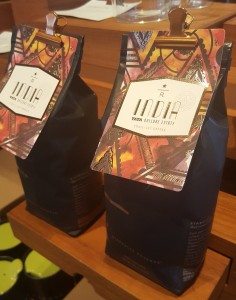
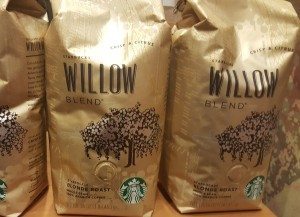
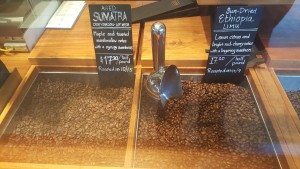
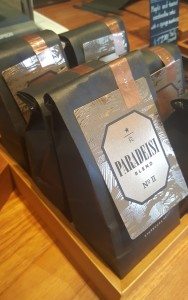
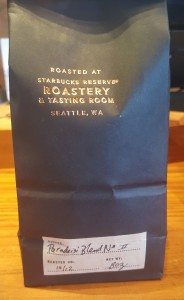



melody, how do you measure the extraction?
@Jenn – I don’t know how to measure the extraction. I just trust enormously that if I follow these 4 rules, it’s going to come out with the right extraction. Starbucks has made almost no changes or modifications to the 4 fundamentals in 30 years. I have faith they got it right! LOL
So very helpful and a great reminder!
Brew ratio is a common way for coffee professionals to discus their brewing. As in, “Today I brewed my coffee using a 1:15 ratio and it was perfect!” The first number represents the ground coffee and the second number represents the water. Both are measured by weight, usually grams. It is also common to share the resulting weight of coffee produced from your brew method. This is why I always brew my coffee on my Acaia scale for accuracy (and fun tracking & sharing of my coffee journey). Happy brewing!